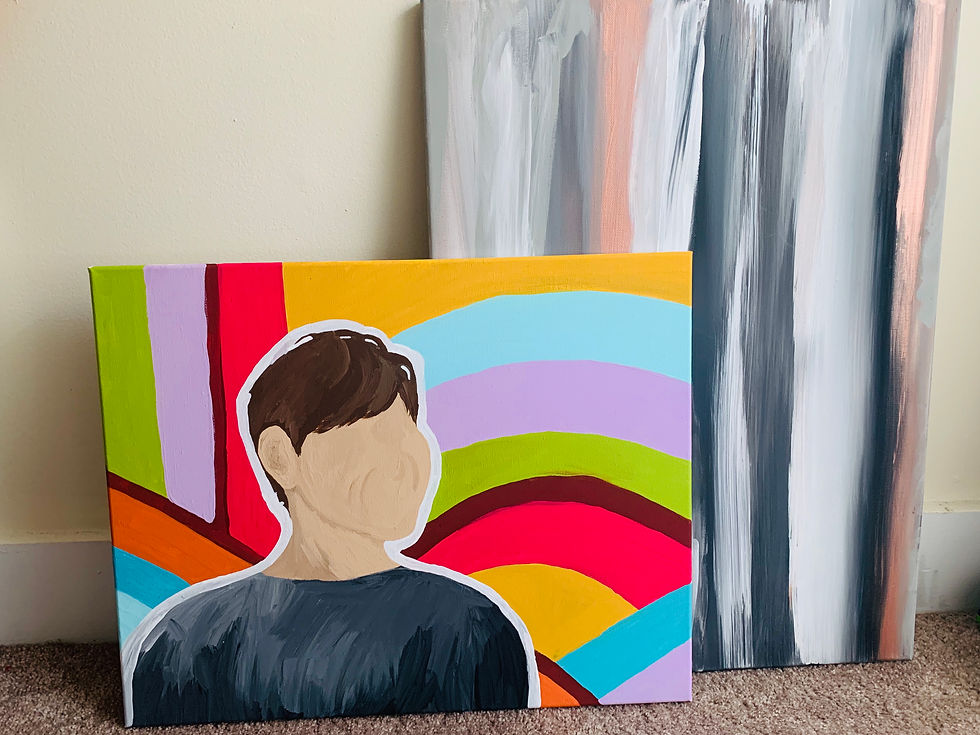10 Unspoken Typography Rules
- Destiny Barajas

- Feb 12, 2020
- 2 min read
Updated: Feb 12, 2020
These are just some of the unspoken typography rules followed by many graphic designers including myself.
1. Don't Distort Fonts
Fonts should not be stretched or widened. Fonts were simply not designed to be altered in that way.
2. Don't Combine Two San Serif Fonts
When you pair two fonts you want them to contrast in order to compliment each other. Having two san serif fonts will cause the fonts to compete with each other rather than compliment the other.
An example of a good pair is Montserrat and Lora.
3. Limit Your Fonts
We talked about how pairing fonts can be highly successful, but too many fonts is something to watch out for. Limit yourself to 2 fonts and perhaps even 3 if necessary. It is common to have a different font for a header and subhead.
4. Avoid Widows & Orphans
"Widows" cause too much white space between paragraphs and "orphans" disrupt the flow and legibility. Simple fixes include manual line breaks.
5. Use The Perfect Sentence Length
This rule might sound odd to you, but the perfect sentence length is real. This again goes back to legibility. If the sentences are too short, a body of text is hard to follow, and if the sentences are too long, the reader will get lost.
6. S P A C I N G
Spacing (or kerning) is probably the MOST important to keep in mind. Kerning is the spacing between letters within a word. I found many typography fails that resulted because of a lack of attention to spacing/kerning.

Here, I posted my favorite example of poor kerning. There is too much space between the "E" and the "R" in "THERAPIST." This simple mistake could have been easily avoided, but now "Massage The Rapist" is engraved in everyone's heads.
7. NEVER Center Align Paragraph Text
If you haven't picked up on the main idea, good typography focuses on legibility. If you center-align paragraph text or a large body of text, it becomes harder for your eyes to follow and therefore harder to read. This is mostly because we are used to reading from left to right so when the jagged edges alter where the beginning of a sentence is, it slows us down. This is especially true when
sentences in the middle are much shorter than the rest. It's also not visually appealing.
8. NEVER Write in All Caps When Using Script
Script can be beautiful, but it is simply illegible if you type in all caps. Use it sparingly.

9. Keep Text Hierarchy In Mind
Essentially you want the most important text to be the biggest. Text hierarchy is necessary to create text that is easy to read and quickly scan for information. It comes down to 3 levels of hierarchy which include: heading, subheading and body. Below is an example I created to help you better understand.

10. NEVER USE PAPYRUS OR COMIC SANS

Comic Sans
Comic Sans is the least liked font out of all. It is literally used on memes. Comic Sans looks like a child's handwriting as it is non-threatening and bubbly. It just not appropriate to use Comic Sans in most environments especially professional environments.
Papyrus
This font is overused. You might remember it on the Avatar movie posters. We're just tired of it. Please stop.









I didn't know how much I already used some of this in my writing! Awesome presentation and very easy to read, can't wait to see more!!
I love this post! The way you illustrated each rule within your text is witty and fun. Your examples were great and well placed. What a fun read!